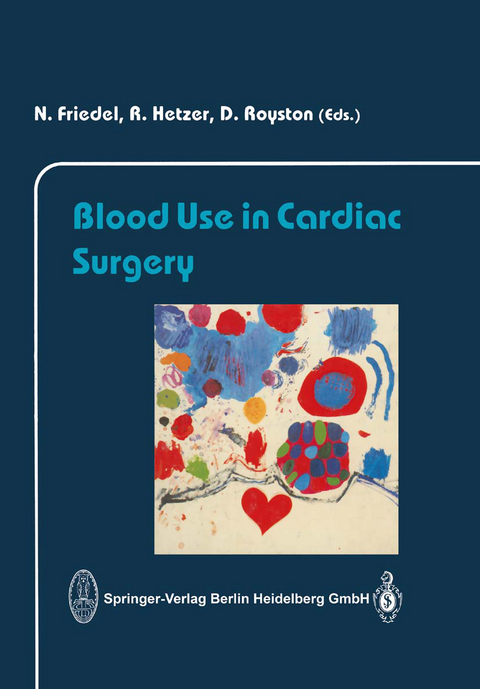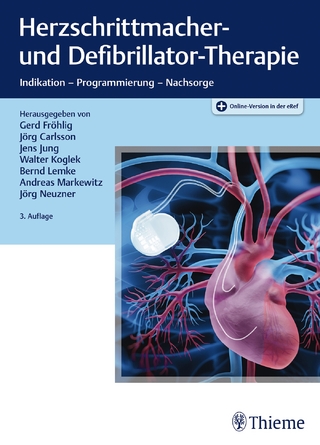
Blood Use in Cardiac Surgery
Steinkopff (Verlag)
978-3-662-06121-3 (ISBN)
I. Pathomechanism of Defective Hemostasis During and After Extracorporeal Circulation.- Fibrinolysis.- Pathomechanisms of Defective Hemostasis During and After Extracorporeal Circulation: Contact Phase Activation.- Pathomechanism of Defective Hemostasis During and After Extracorporeal Circulation: The Role of Platelets.- Blood-Surface Interaction During Cardiopulmonary Bypass.- A Clinical Study on Platelet Preservation in Coronary Artery Bypass Surgery During Cardiopulmonary Bypass without Oxygenator.- The Effect of Aprotinin on Platelet Function and Coagulation In Vitro.- Clinical Impact of Reduced Blood Cell Deformability During Cardiopulmonary Bypass.- Diagnostic Value of Hemostatic Parameters for Prediction of Complications in Patients Undergoing Aorto-Coronary Bypass Grafting.- Summary of Lectures, Posters and Discussion: Pathomechanism.- II. Epidemiology - The Size of the Clinical Problem.- Homologous Blood Use in Cardiac Surgery.- Blood Use in Cardiac Surgery - A Transfusionist's Viewpoint.- Current Risks of Blood Transfusion.- Blood Use in Adult Cardiac Surgery - Extrapolations from the Carola data base.- Evolution of Requirements to Replace Blood and Plasma in Cardiac Surgery.- AIDS and Surgery: On the Need to Reduce the Risks of HIV Infection.- Epidemiology - Screening for Infectious Diseases Transmitted Through Blood and Blood Products.- III: Non-Pharmacological Methods for the Reduction of Blood Use in Cardiac Surgery.- Autologous Blood Predonation.- Resuscitation Fluids for the Treatment of Hemorrhagic Shock in Dogs: The Effects on Myocardial Blood Flow.- Reduction of Blood Use in Cardiac Surgery by Topical Hemostasis Using Fibrin Sealant.- Retransfusion of Postoperative Drainage Blood.- Bacteriological Methods to Monitor the Quality ofIntraoperative Autotransfusion.- Blood Salvage in Cardiac Surgery: Comparative Analysis of Three Procedures.- Inflammatory Response Due to Cell-Saver in Cardiac Surgery.- Open-Heart Surgery in Jehovahs Witnesses.- Autologous Blood Transfusion in Cardiac Surgery - 15-Year Experience.- Preoperative Autologous Blood Donation to Minimize Homologous Blood Transfusions.- Use of Predonated Autologous Blood in Cardiac Surgery.- Blood Use Reduction by Predonation - How Effective is It?.- Autologous Blood Transfusion in Cardiac Surgery.- Intraoperative Blood Conservation Using Cell-Saver.- Intraoperative Autotransfusion.- Cardiac Surgery in Jehovah's Witnesses: An Experience of 62 Cases.- Reduction of Homologous Blood Requirement During Myocardial Revascularization - Comparison of Four Different Techniques.- IV. Pharmacological Methods for the Reduction of Blood Use in Cardiac Surgery.- Platelet Dysfunction after Coronary Artery Bypass Surgery.- Clinical Effectiveness of Aprotinin in Heart Surgery.- Safety and Risk/Benefit Assessment of Aprotinin in Primary CABG.- Investigation on the Mechanisms of Action of Aprotinin in Cardiac Surgery.- High-dose Aprotinin Reduces Bleeding in Patients Taking Aspirin at the Time of Aorto-Coronary Bypass Surgery.- Preserved Hemostasis During the Combined Use of Aprotinin and Aspirin in CABG Operations.- ACT and Aprotinin.- Aprotinin: Effect on "Re-Do" Surgery.- The Edinburgh Experience - Low-dose Trasylol.- Reduction of Blood Use by Aprotinin After Heart-Transplantation.- Blood Damage and Activation in Cardiopulmonary Bypass.- V. Panel Discussion.- Changing Concepts of Blood Use in Cardiac Surgery.
| Erscheint lt. Verlag | 3.10.2013 |
|---|---|
| Zusatzinfo | X, 286 p. 72 illus. |
| Verlagsort | Heidelberg |
| Sprache | englisch |
| Maße | 170 x 244 mm |
| Gewicht | 520 g |
| Themenwelt | Medizinische Fachgebiete ► Chirurgie ► Herz- / Thorax- / Gefäßchirurgie |
| Schlagworte | Cardiac Surgery • Surgery • Trauma |
| ISBN-10 | 3-662-06121-X / 366206121X |
| ISBN-13 | 978-3-662-06121-3 / 9783662061213 |
| Zustand | Neuware |
| Haben Sie eine Frage zum Produkt? |
aus dem Bereich


